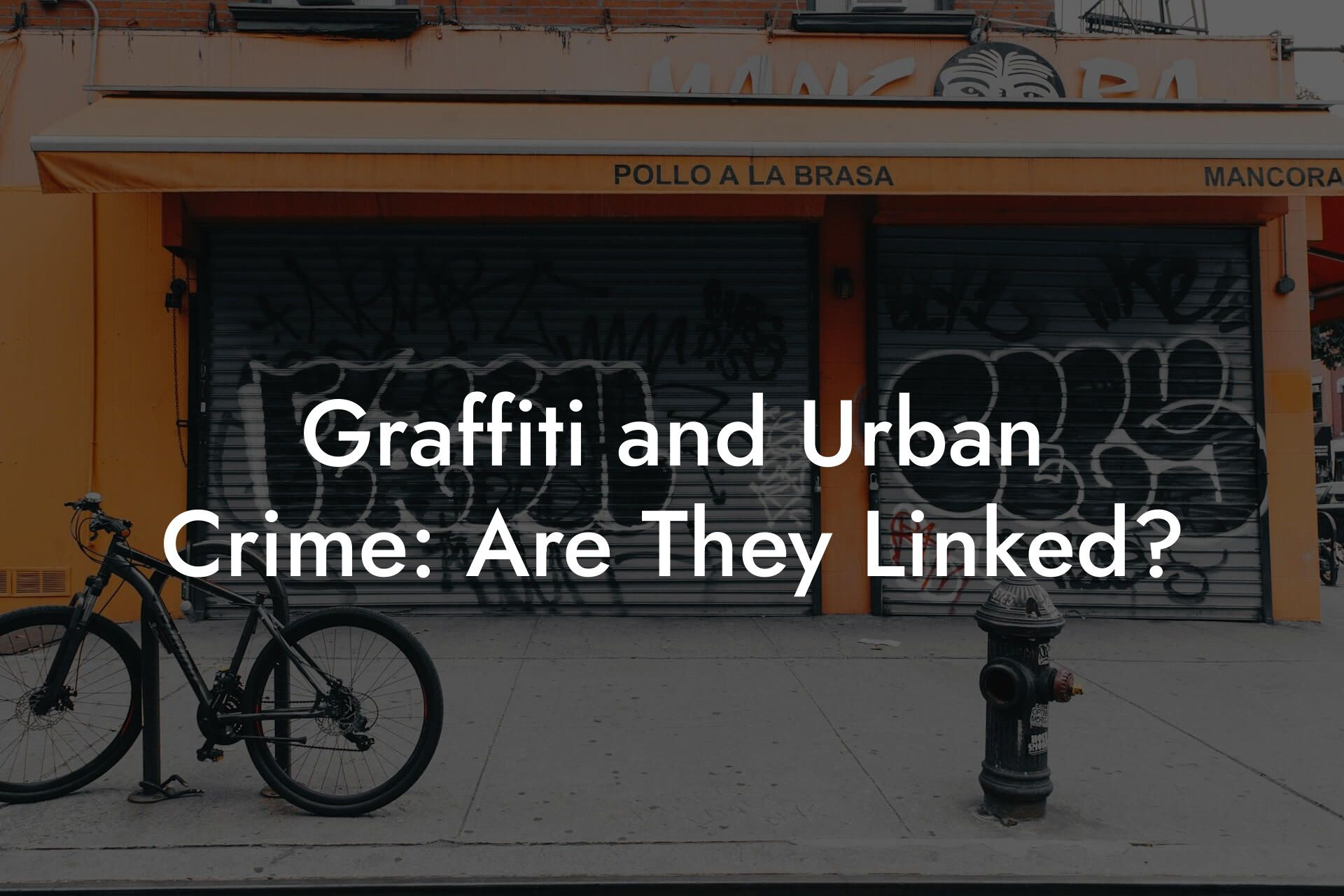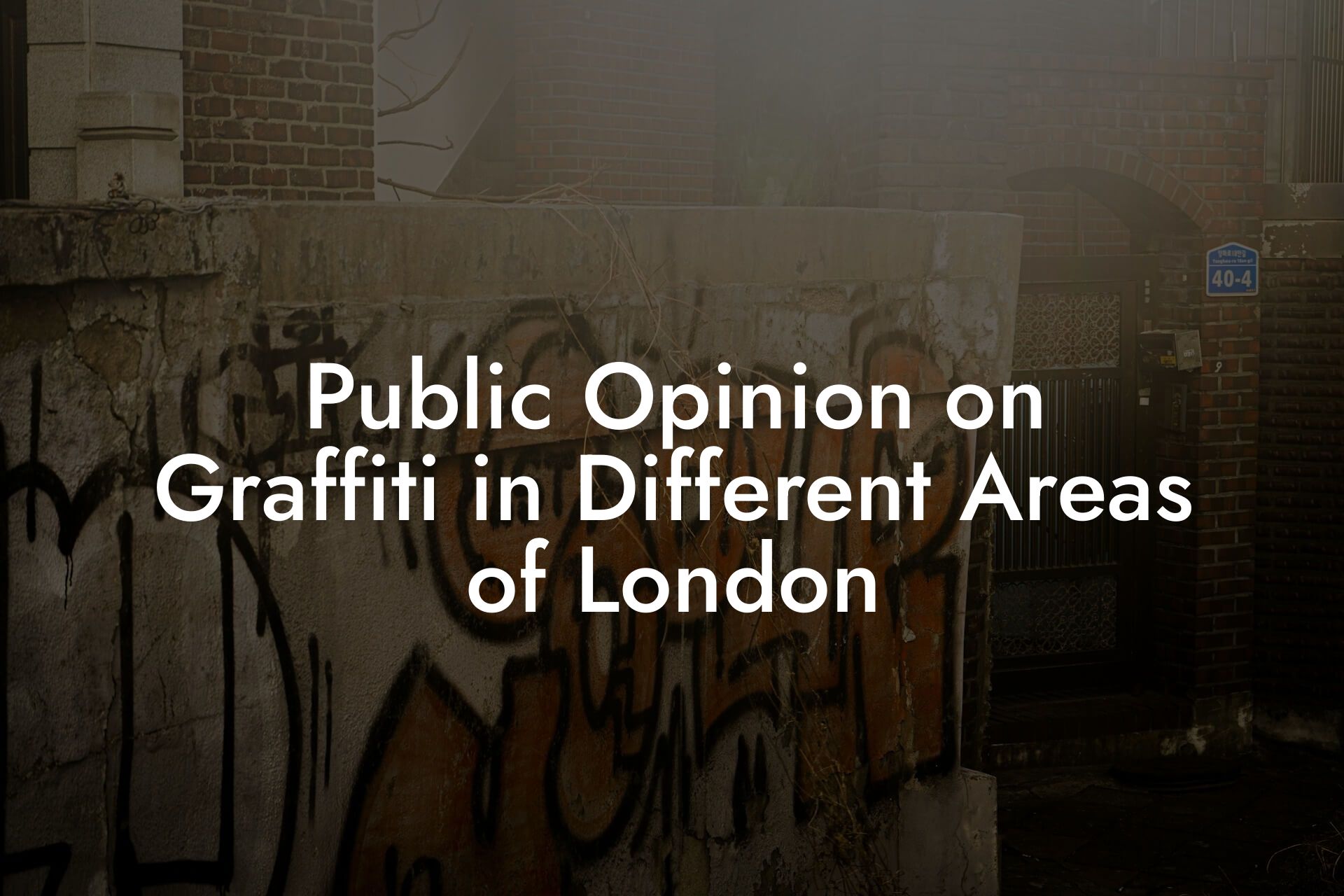Graffiti has been a part of urban landscapes for decades, sparking controversy and debate among citizens, artists, and authorities. While some view it as a form of artistic expression and a way to reclaim public spaces, others see it as vandalism and a blight on the community. As a graffiti removal company based in London, we've witnessed firsthand the impact of graffiti on businesses and neighborhoods. In this article, we'll delve into the cultural and artistic debate surrounding graffiti, exploring its history, the arguments for and against, and the role of graffiti removal in maintaining public spaces.
Table of Contents
A Brief History of Graffiti
Graffiti has its roots in ancient civilizations, with evidence of graffiti found in ancient Greece, Rome, and Egypt. However, modern graffiti as we know it today emerged in the 1970s in New York City, particularly in the Bronx and Manhattan. It was initially associated with hip-hop culture and was used as a means of self-expression and rebellion against authority. The 1980s saw the rise of stencil graffiti, popularized by artists like Blek le Rat and Banksy, who used stencils to create intricate and often politically charged designs.
The Argument for Graffiti as Art
Proponents of graffiti argue that it is a legitimate form of art, providing a platform for self-expression and creativity. Graffiti artists often use public spaces as a canvas, challenging traditional notions of art and its relationship with the community. Many argue that graffiti adds character and personality to urban landscapes, making them more vibrant and interesting. Some even see graffiti as a form of social commentary, with artists using their work to address issues like poverty, inequality, and social justice.
The Argument Against Graffiti as Vandalism
On the other hand, opponents of graffiti view it as vandalism, arguing that it is illegal and damages private and public property. They claim that graffiti is a blight on the community, reducing property values and creating an atmosphere of neglect and disorder. Many business owners and residents see graffiti as a nuisance, complaining that it attracts unwanted attention and creates a sense of lawlessness. Authorities often view graffiti as a criminal offense, with penalties ranging from fines to imprisonment.
The Role of Graffiti Removal
As a graffiti removal company, we've seen the impact of graffiti on businesses and neighborhoods. Graffiti removal is an essential service that helps maintain public spaces and restore property values. By removing graffiti quickly and efficiently, we can prevent further vandalism and create a safer, more welcoming environment for the community. Our team uses specialized equipment and techniques to remove graffiti without damaging surfaces, ensuring that properties are restored to their original state.
The Legal Framework Surrounding Graffiti
In the UK, graffiti is considered a criminal offense under the Criminal Damage Act 1971. The Act makes it an offense to damage or destroy property without the owner's consent, with penalties ranging from fines to imprisonment. However, the law also recognizes the cultural significance of graffiti, with some forms of street art protected under the Town and Country Planning Act 1990. The Act allows local authorities to designate areas as "graffiti zones," where street art is permitted and even encouraged.
The Impact of Graffiti on Business and Community
Graffiti can have a significant impact on businesses and communities, affecting property values, customer perception, and overall quality of life. Research has shown that areas with high levels of graffiti are often associated with increased crime rates, reduced foot traffic, and decreased property values. On the other hand, areas with vibrant street art scenes can attract tourists, increase foot traffic, and boost local economies. As a graffiti removal company, we've seen firsthand the impact of graffiti on businesses, from small independent shops to large corporations.
The Future of Graffiti and Street Art
As attitudes towards graffiti continue to evolve, it's clear that street art is here to stay. Many cities are embracing street art, designating areas as "graffiti zones" and even commissioning artists to create large-scale murals. The rise of social media has also democratized street art, allowing artists to showcase their work and connect with a global audience. As a graffiti removal company, we recognize the importance of balancing the need to maintain public spaces with the need to support and celebrate artistic expression.
The cultural and artistic debate surrounding graffiti is complex and multifaceted, with valid arguments on both sides. While graffiti can be a powerful form of artistic expression, it can also be a blight on the community. As a graffiti removal company, we're committed to providing a vital service that helps maintain public spaces and restore property values. By understanding the cultural and artistic significance of graffiti, we can work towards creating a more vibrant, inclusive, and beautiful urban landscape for all.
Frequently Asked Questions
What is graffiti and why is it considered a form of vandalism?
Graffiti is the unauthorized writing or drawing on a surface, usually in a public place, with the intention of conveying a message or expressing oneself. It is considered a form of vandalism because it involves damaging or defacing property without the owner's consent. While some people view graffiti as a form of art, others see it as an eyesore that can lower property values and create a sense of disorder.
Is graffiti illegal in London?
Yes, graffiti is illegal in London and is considered an act of criminal damage under the Criminal Damage Act 1971. Those caught engaging in graffiti can face fines, community service, or even imprisonment.
What is the difference between graffiti and street art?
While both graffiti and street art involve creating art in public spaces, the key difference lies in permission. Street art is typically created with the property owner's consent, whereas graffiti is done without permission. Street art can also be more elaborate and may involve murals, mosaics, or other forms of visual expression.
Why do people engage in graffiti?
People engage in graffiti for a variety of reasons, including self-expression, rebellion, or to make a political statement. Some may see it as a way to challenge authority or to leave their mark on a particular place. Others may simply enjoy the thrill of creating something in a public space.
What are the consequences of graffiti for property owners?
Graffiti can have serious consequences for property owners, including decreased property values, increased maintenance costs, and a negative impact on the overall aesthetic of the area. It can also attract other forms of vandalism and create a sense of disorder.
How can I prevent graffiti on my property?
There are several ways to prevent graffiti on your property, including installing security cameras, improving lighting, and using graffiti-resistant coatings. You can also work with local authorities to report incidents of graffiti and encourage community engagement to discourage vandalism.
What are the most common types of graffiti?
The most common types of graffiti include tagging, which involves writing one's name or initials in a stylized script; throw-ups, which involve more elaborate designs; and stenciling, which involves using a stencil to create an image or message.
What is the history of graffiti?
Graffiti has a long history that dates back to ancient civilizations, including Greece and Rome. In modern times, graffiti emerged as a distinct art form in the 1970s and 1980s in New York City, where it was closely tied to the hip-hop movement.
Is graffiti a form of free speech?
The question of whether graffiti is a form of free speech is a complex one. While some argue that graffiti is a form of self-expression and therefore protected by freedom of speech laws, others argue that it is a form of vandalism that can cause harm to others.
How can I remove graffiti from my property?
There are several ways to remove graffiti from your property, including using specialized cleaning products, power washing, and painting over the graffiti. It's also a good idea to document the graffiti and report it to the authorities before removing it.
What services does Graffiti Removal London offer?
Graffiti Removal London offers a range of services, including graffiti removal, vandalism cleanup, and preventative measures such as graffiti-resistant coatings and security camera installation. We work with commercial property owners to provide effective and efficient solutions to graffiti and vandalism.
Why should I hire a professional to remove graffiti?
Hiring a professional to remove graffiti can save you time and money in the long run. Professionals have the necessary equipment and expertise to remove graffiti effectively and safely, without damaging the underlying surface.
How quickly can Graffiti Removal London respond to a graffiti incident?
Graffiti Removal London can respond quickly to graffiti incidents, often within 24 hours. We understand the importance of removing graffiti promptly to prevent further vandalism and to maintain a positive image for your business.
What is the cost of graffiti removal?
The cost of graffiti removal varies depending on the size and location of the graffiti, as well as the type of surface it is on. We offer competitive pricing and can provide a free quote for our services.
Can I report graffiti to the authorities?
Yes, you can report graffiti to the authorities. In London, you can report graffiti to the Metropolitan Police Service or to your local council. Reporting graffiti can help to identify and prosecute those responsible, and can also help to prevent further incidents.
What can I do to prevent graffiti in my community?
There are several ways to prevent graffiti in your community, including organizing community clean-up events, working with local authorities to report incidents, and encouraging local businesses to take steps to prevent graffiti.
Is graffiti a sign of a larger social problem?
Graffiti can be a sign of a larger social problem, such as poverty, lack of opportunity, or social disillusionment. Addressing the underlying causes of graffiti can help to prevent it and create a more positive and vibrant community.
Can graffiti be a form of urban renewal?
In some cases, graffiti can be a form of urban renewal, as it can add color and vibrancy to an area. However, this depends on the context and the type of graffiti. Unauthorized graffiti can still be considered vandalism and can have negative consequences.
How can I engage with the graffiti community?
Engaging with the graffiti community can be a complex and sensitive issue. One approach is to work with local artists and community groups to create legal graffiti murals or other forms of street art. This can help to channel creative energy in a positive way and create a sense of community pride.
What is the future of graffiti?
The future of graffiti is uncertain, as it is influenced by a range of factors, including changes in technology, shifts in cultural attitudes, and evolving legal frameworks. However, it is likely that graffiti will continue to play a role in urban culture and will continue to be a topic of debate and discussion.
How can I learn more about graffiti and its cultural significance?
There are many ways to learn more about graffiti and its cultural significance, including reading books and articles, attending exhibitions and events, and engaging with local graffiti communities. You can also explore online resources and documentaries to gain a deeper understanding of this complex and multifaceted issue.
Toby Doherty
Toby Doherty is a seasoned graffiti removal expert with over 20 years of experience in the industry. Throughout his career, Toby has helped countless businesses and property owners in London maintain clean, graffiti-free spaces. His extensive knowledge of graffiti removal techniques, from eco-friendly solutions to advanced technologies like laser cleaning, makes him a trusted authority in the field. Passionate about restoring urban environments, Toby combines his hands-on expertise with a commitment to staying up-to-date on the latest industry trends and innovations. When he’s not out in the field, Toby shares his insights through detailed articles, offering practical advice on everything from graffiti prevention to legal considerations.



